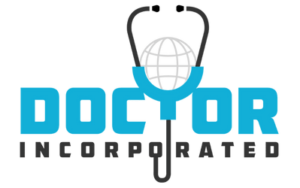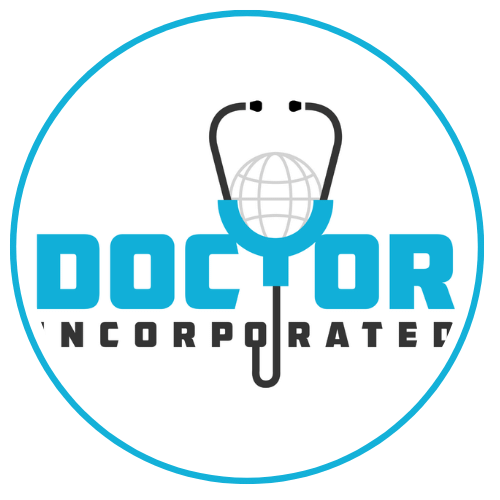
My family loves Mexican-American food, and we especially delight in the bottomless tortilla chips along with homemade salsa. This combo typically precedes our food order when are going to our favorite local Mexican establishment. We always go into the restaurant with the resolve not to over-eat the chips before the meal arrives, but always seem to miss that mark.
Bottomless anything creates a sense of indulgence, freedom, and security. We often ignore the normal boundaries that guard against overdoing it or the mental signals of self-control that provide healthy limits. Certainly running out of the bottomless product, rarely crosses our minds. Self-regulation is typically the limiting factor.
Sharing the Money
Medical practice for American physicians has been a bottomless financial feast for generations.
Visualizing this feast, many have joined in to take their portion, resulting in dramatic changes in the economics of healthcare over the past 75 years. The biggest changes include the entry of controlling stakeholders like Medicare, Medicaid, private insurance, Hospital-Health Systems, and corporate healthcare employers. Don’t forget EMR’s. which are basically a Trojan horse for 3rd parties. All of these forces have moved the control of healthcare economics away from the physician. They are 3rd party raiders of what was once rightfully our domain.
Employment Safety Net
Physicians are adapting to these new forces by shifting towards employment models that lead to guaranteed income and performance bonuses. Basically, it’s a financial safety net that leads to predictable income. In exchange for this, their employers gain control of patient populations and physician alignment all while directing both towards their medical enterprise. Much like big box stores, it’s a volume and throughput game.
It’s a nice recipe for doctors who are securely reassured that their source of income and patients are going to be provided by their employer who controls a local or regional market share. No longer does the doctor need to be concerned about sourcing either element, as the employer is charged with feeding the physician a bottomless population of patients.
Given a bottomless flow of patients, our choice is to simply self-regulate the volume, delivery, and cadence that matches our preferences, specialty, and personality.
It’s kind of nice, just like going to a Mexican restaurant. The tortilla chips and salsa are at my beckon call, and I simply have to decide on the main dish. Sweet.
91%
This is why 91% of new resident graduates are opting for healthcare employment as their next step. It is a seemingly very safe step to take while stepping into a healthcare landscape in which only 8% of residency graduates feel equipped to handle the business of medicine. With this movement, private practice is rapidly becoming the minority option
This is no surprise because the battle for patient market share is no longer defined by the physician-patient dyad. The patients are now controlled by stakeholders who have purchased controlling interest in directing those patients to their own enterprise. Insurance companies and hospitals now determine who will have access to those patients. If you want bottomless access to those patients, then you are incentivized to become an employee. Becoming an employee is a whole lot more appealing than agreeing to a ridiculously discounted service contract that gives your private practice access to “their” patients. The financial disincentive to remain in private practice becomes increasingly difficult as all physicians are driven towards employment. COVID-19 may have been the final step in putting a fork in private practice physicians
Options
As physicians are driven towards employment or contracted labor, it is critical for you to know that the employment contract that your employer’s legal department slides across the table at you is not the only version of employment that exists. Too many physicians are blindly signing on to contracts whose compensation seems in the range of fair market value, but the rest of the contract heavily favors the employer.
I strongly encourage new residency graduates to form their own Professional Corporation (PC) as well as connect with a physician centric agency to represent their interests. This will equip you with a professional team and business structure that maximizes all of your options as you step into the negotiation table with your preferred employer.
Employment Lite
For example an Employment Lite or PSA contract is a nice option that provides employers with what they want—physician services and alignment, but it also provides the physician enormous control of their professional and personal financial lives.
PSA’s in a nutshell, are a form of alignment between hospitals and physicians that falls just short of full employment. It’s used as ’employment lite’ because the physician is not directly employed and still maintains some semblance of control.
Physicians should have someone represent them that understands PSA’s and Fair Market Value Compensation. SimpliMD is one such agency, but there are others. You may even have to familiarize your employer with the PSA option. After they understand it is Stark and Anti-Kickback compliant, then the next step involves making sure the deal is at a fair market value. Regardless of the type of contract or model of productivity, hospitals are required to compensate physicians appropriately for the services actually provided. At the end of the day, some type of productivity metric or work relative value unit per procedure will be used for compensation measures, and this is usually MGMA data driven.
I stepped away from a standard employment contract a few years ago for a number of reasons, but mostly because it was burning me out due to the loss of autonomy, and it was costing me nearly a million dollars in lost income.
I have been successfully using the PC-PSA model in my family medicine employment for several years now., and I love it.
It is truly a win-win relationship, and it feels bottomless for both parties.
In my next post I’ll talk a little more about the hazards of bottomless thinking for physicians.

Dr. Inc.
[/et_pb_text][/et_pb_column] [/et_pb_row] [/et_pb_section]

